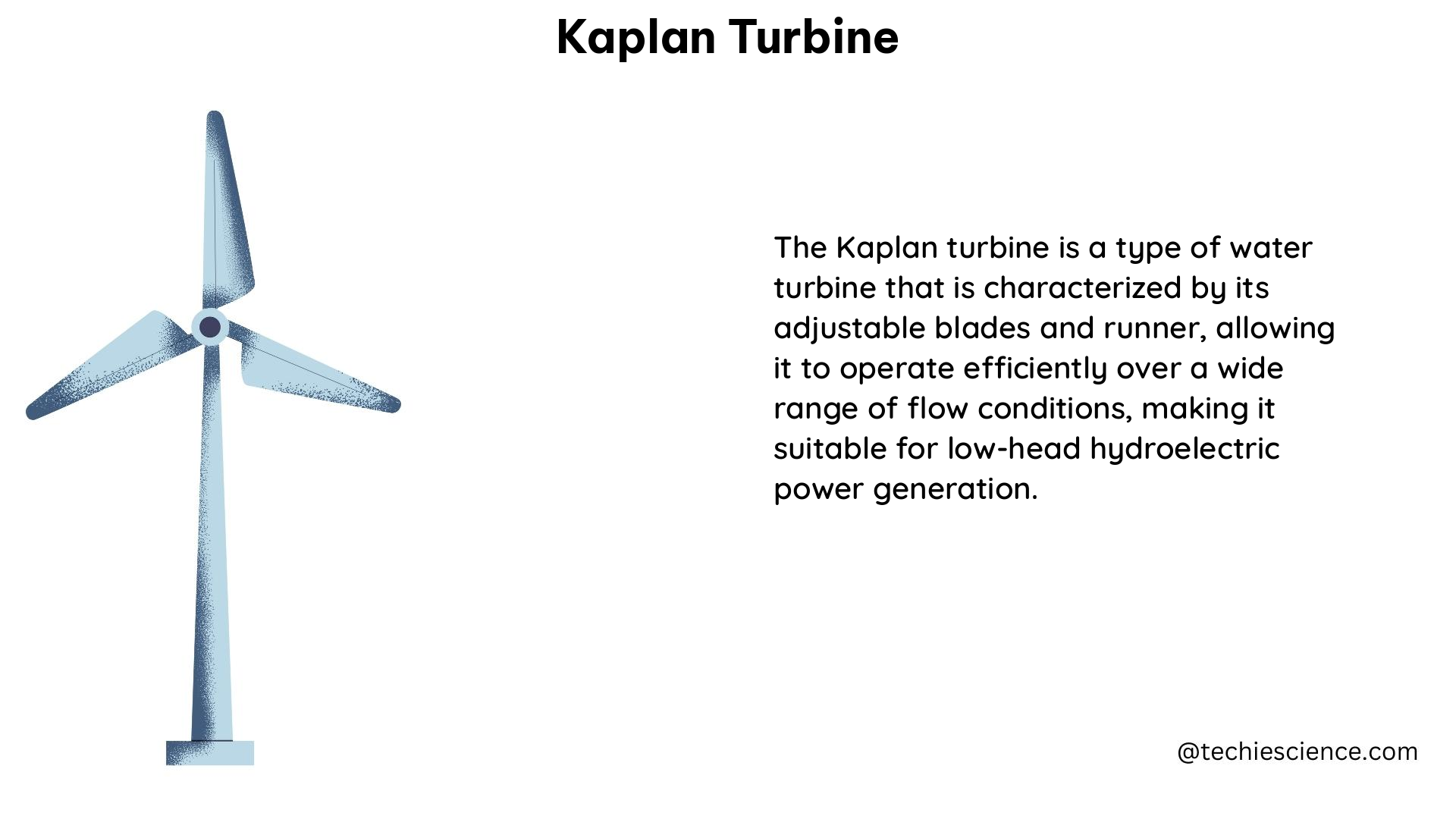Kaplan turbines are a type of hydraulic turbine that have revolutionized the world of hydropower generation. These versatile machines are capable of operating at high efficiencies across a wide range of flow rates and heads, making them a popular choice for hydroelectric power plants. In this comprehensive guide, we’ll delve into the intricate details of Kaplan turbines, exploring their design, performance, and optimization techniques to help you unlock the full potential of this remarkable technology.
Understanding the Kaplan Turbine Design
At the heart of a Kaplan turbine is a propeller-type runner with adjustable blades and wicket gates. This unique design allows for the precise control of water flow, enabling the turbine to adapt to changing conditions and maintain optimal efficiency.
Adjustable Wicket Gates
The wicket gates, also known as guide vanes, are responsible for directing the water flow into the runner. These gates can be adjusted to control the flow rate and power output of the turbine. By varying the angle of the wicket gates, the water flow can be optimized for different operating conditions, ensuring maximum efficiency.
Adjustable Runner Blades
The runner blades of a Kaplan turbine can also be adjusted to optimize the angle of attack of the water. This feature, combined with the adjustable wicket gates, allows the turbine to operate over a wider range of turbine heads, further enhancing its efficiency.
Specific Speed and Efficiency
Kaplan turbines typically have a specific speed range of 400 to 1000 rpm, which is higher than that of other turbine types, such as Francis or Pelton turbines. This high specific speed translates to a high efficiency, with Kaplan turbines capable of achieving efficiencies ranging from 85% to 95%, depending on the design and operating conditions.
Optimizing Kaplan Turbine Performance

Maximizing the efficiency of a Kaplan turbine is a critical aspect of its operation. This is achieved through the use of combination (CAM) curves, which determine the optimal positioning of the runner blades and wicket gates for a given head.
Combination (CAM) Curves
The CAM curves are initially generated from scaled model tests and then validated in the field through index testing. These curves represent the optimal relationship between the runner blade angle and the wicket gate position, ensuring that the turbine operates at its peak efficiency.
Automatic Optimization Systems
Advanced Kaplan turbines are often equipped with automatic optimization systems that continuously measure and calculate the optimal positioning between the wicket gates and runner blades. By monitoring key variables such as power, net head, and flow rates, these systems can dynamically adjust the turbine’s settings to maintain maximum efficiency.
Optimization Modes
Kaplan turbine optimization systems typically offer two main modes: local search and scan mode. The local search mode fine-tunes the turbine’s settings based on the current operating conditions, while the scan mode explores a wider range of settings to identify the optimal configuration.
Efficiency Improvements
Through the use of these optimization techniques, Kaplan turbines have demonstrated significant efficiency improvements. In one case study, an average increase of 0.7% in efficiency was achieved, leading to a financial benefit of over $45,000 per year for a 12 MW rated unit.
Kaplan Turbine Applications and Considerations
Kaplan turbines find widespread use in hydroelectric power plants, where their versatility and high efficiency make them a popular choice. However, building a full-scale Kaplan turbine from scratch is a complex undertaking that requires specialized equipment and expertise.
Hydroelectric Power Generation
Kaplan turbines are commonly used in hydroelectric power plants, where they can efficiently harness the energy of flowing water to generate electricity. Their ability to operate over a wide range of flow rates and heads makes them well-suited for a variety of hydropower applications.
DIY Kaplan Turbine Projects
While building a full-scale Kaplan turbine from scratch is not feasible for most DIY enthusiasts, there are educational projects and kits available that can provide a hands-on learning experience. These miniature Kaplan turbine kits often include a turbine, generator, and mounting hardware, allowing you to explore the principles of hydropower and turbine design.
Considerations for DIY Kaplan Turbine Projects
It’s important to note that while these educational kits can be a valuable learning tool, they are not intended to be used for large-scale power generation. The scale and complexity of a full-size Kaplan turbine require specialized engineering expertise and manufacturing capabilities that are beyond the scope of a typical DIY project.
Conclusion
Kaplan turbines are a remarkable feat of engineering, combining advanced design, precise control, and high efficiency to revolutionize the world of hydropower generation. By understanding the intricacies of their design, optimization techniques, and practical applications, you can unlock the full potential of this remarkable technology and contribute to the ongoing development of sustainable energy solutions.
References
- Reivax. “Automatic Full Optimization of Kaplan Turbines.” https://www.reivax.com/us/case02-automatic-full/
- CCEE. “Generation Auction No. 02 – 26th Energy Auction From New Generation Projects (A-6),” December 2017.
- ScienceDirect. “Kaplan Turbines.” https://www.sciencedirect.com/topics/engineering/kaplan-turbines
- Instructables. “DIY Hydroelectric Generator Kit.” https://www.instructables.com/DIY-Hydroelectric-Generator-Kit/

The lambdageeks.com Core SME Team is a group of experienced subject matter experts from diverse scientific and technical fields including Physics, Chemistry, Technology,Electronics & Electrical Engineering, Automotive, Mechanical Engineering. Our team collaborates to create high-quality, well-researched articles on a wide range of science and technology topics for the lambdageeks.com website.
All Our Senior SME are having more than 7 Years of experience in the respective fields . They are either Working Industry Professionals or assocaited With different Universities. Refer Our Authors Page to get to know About our Core SMEs.